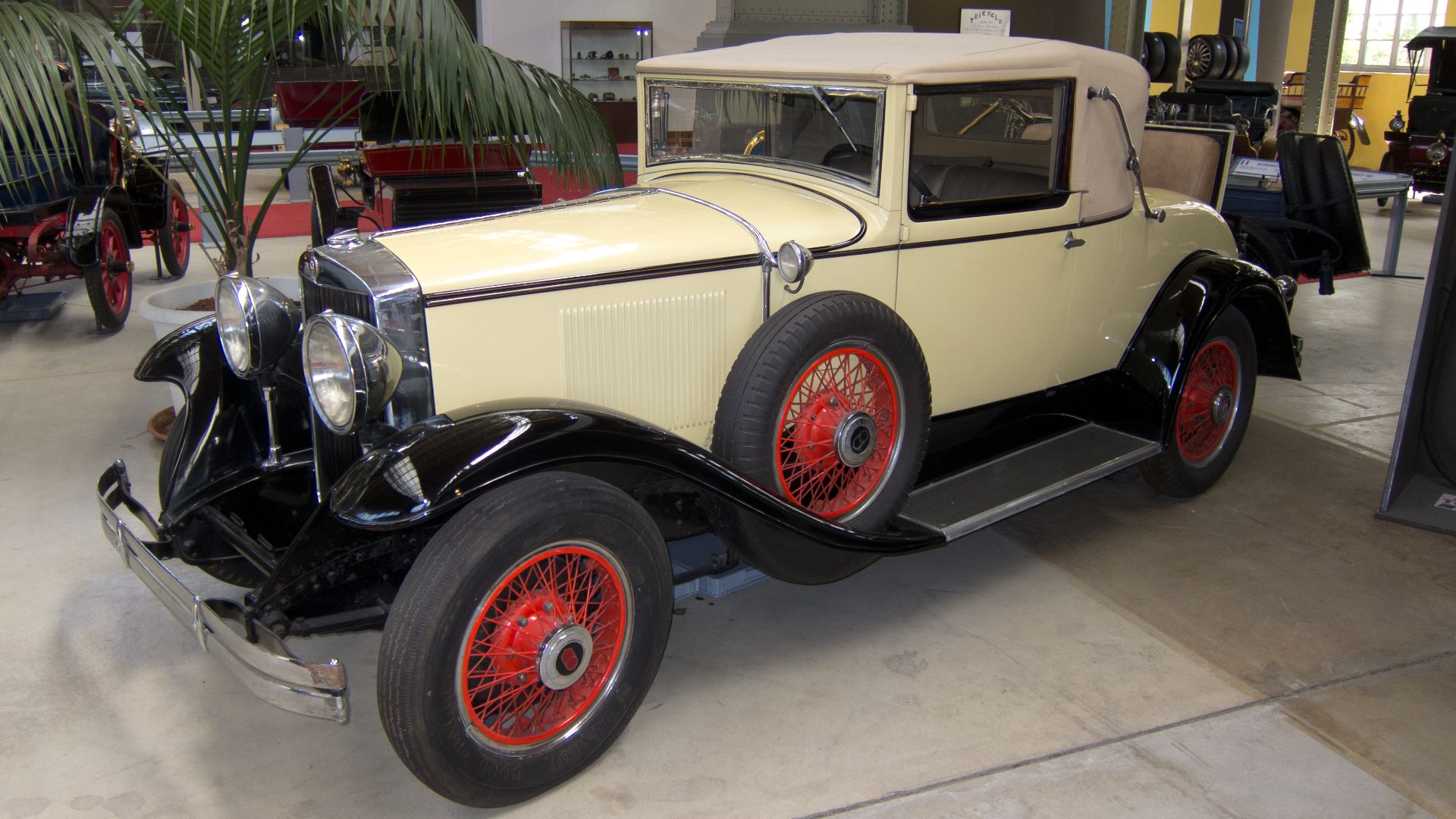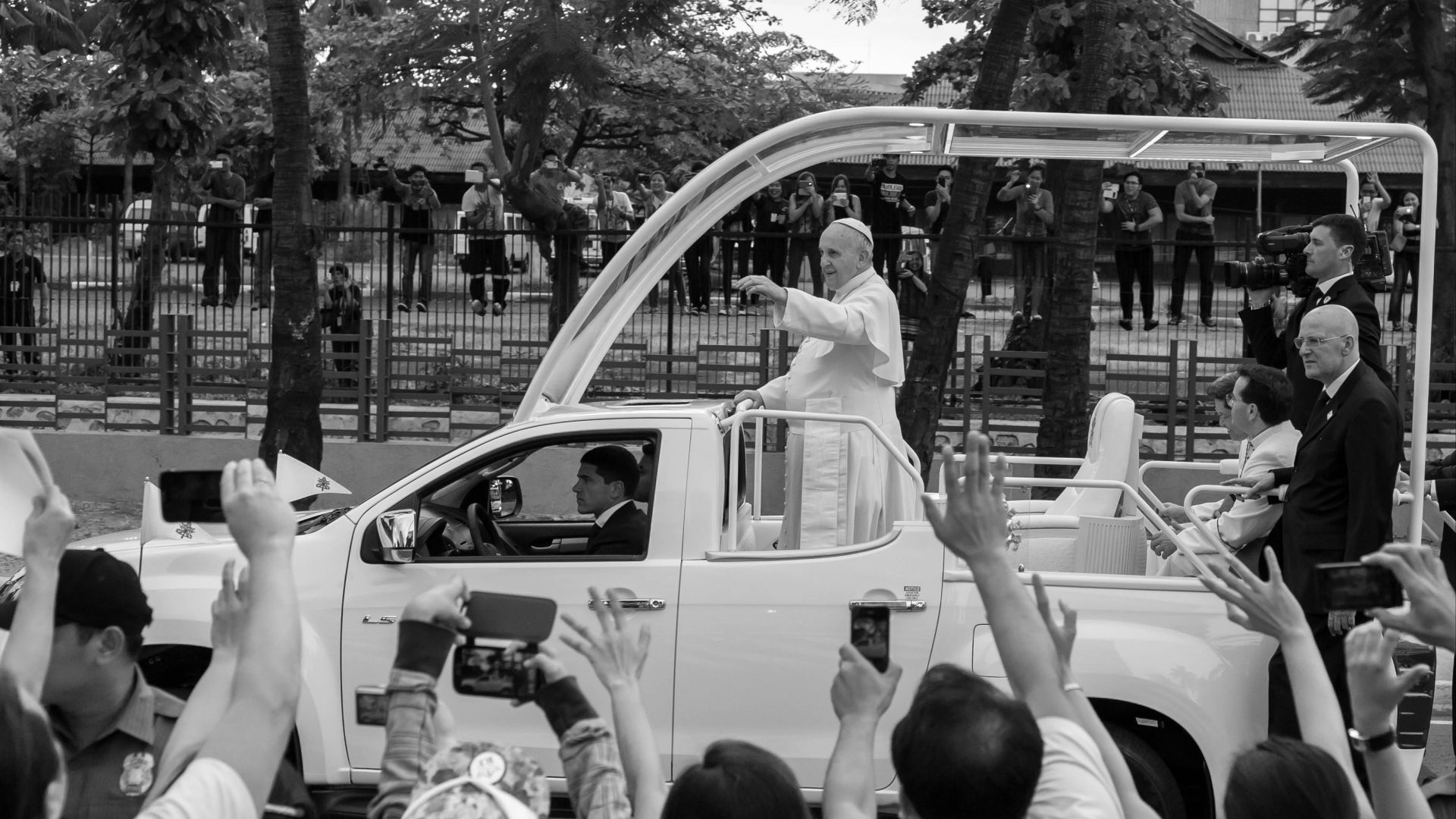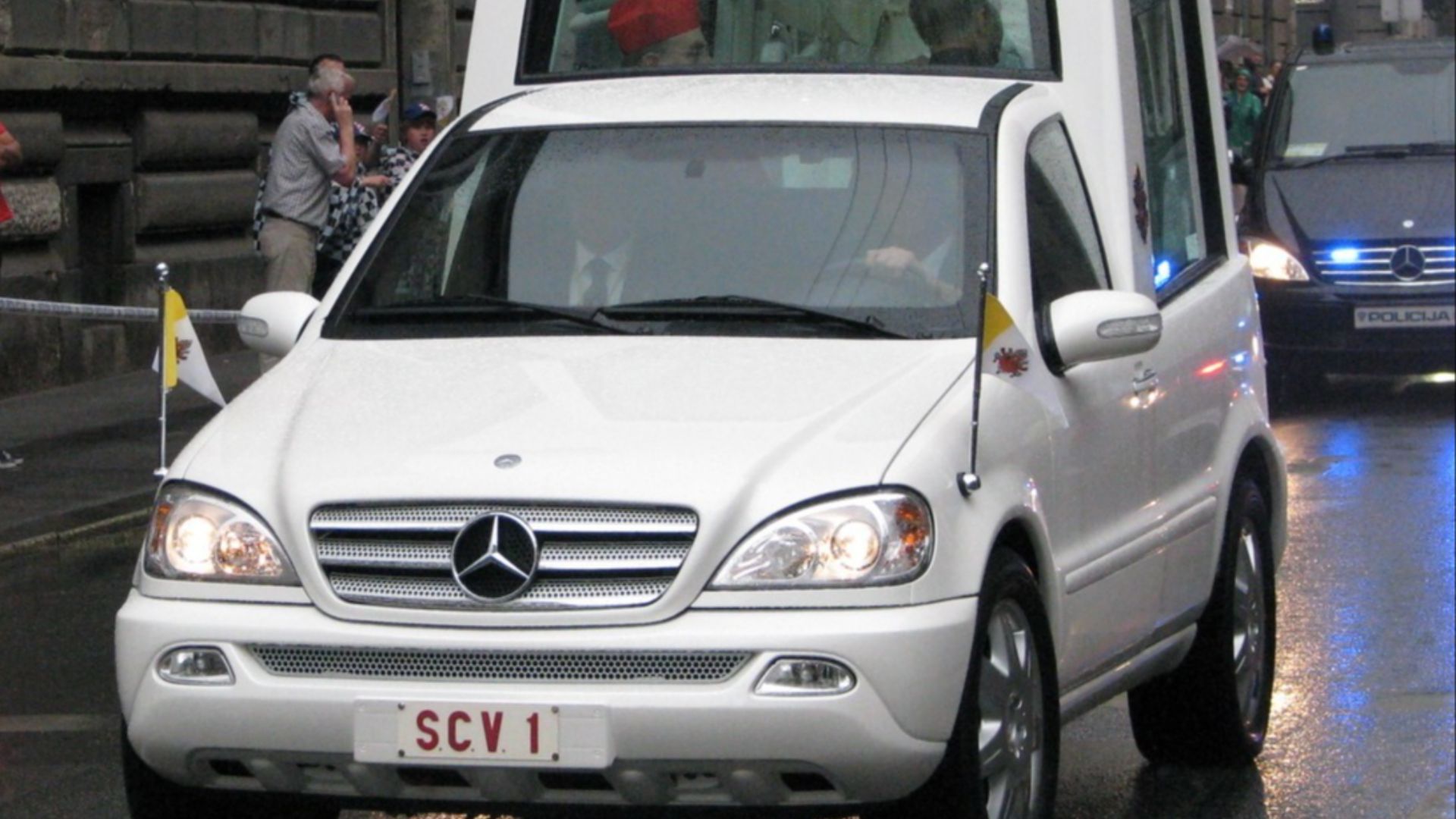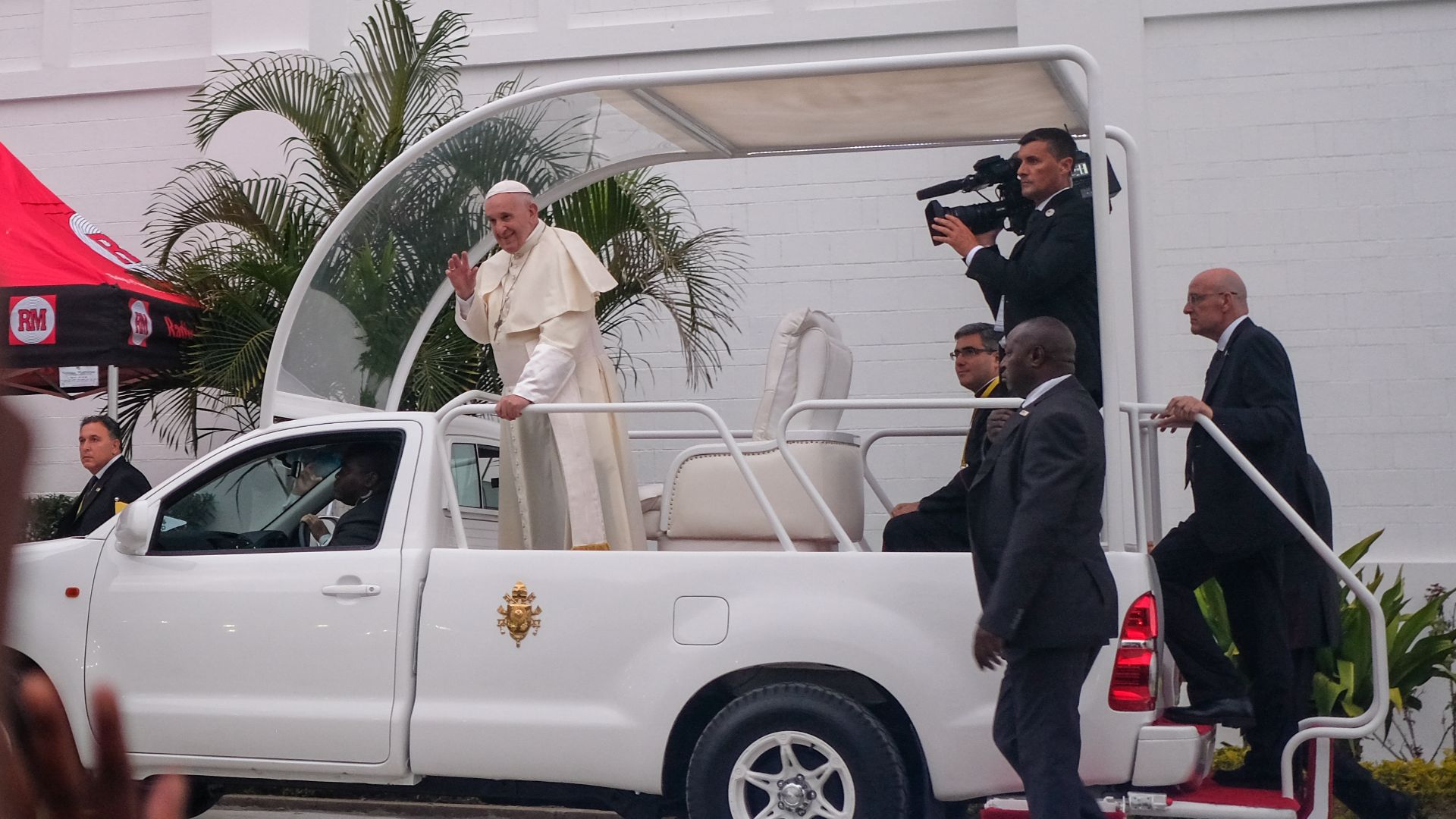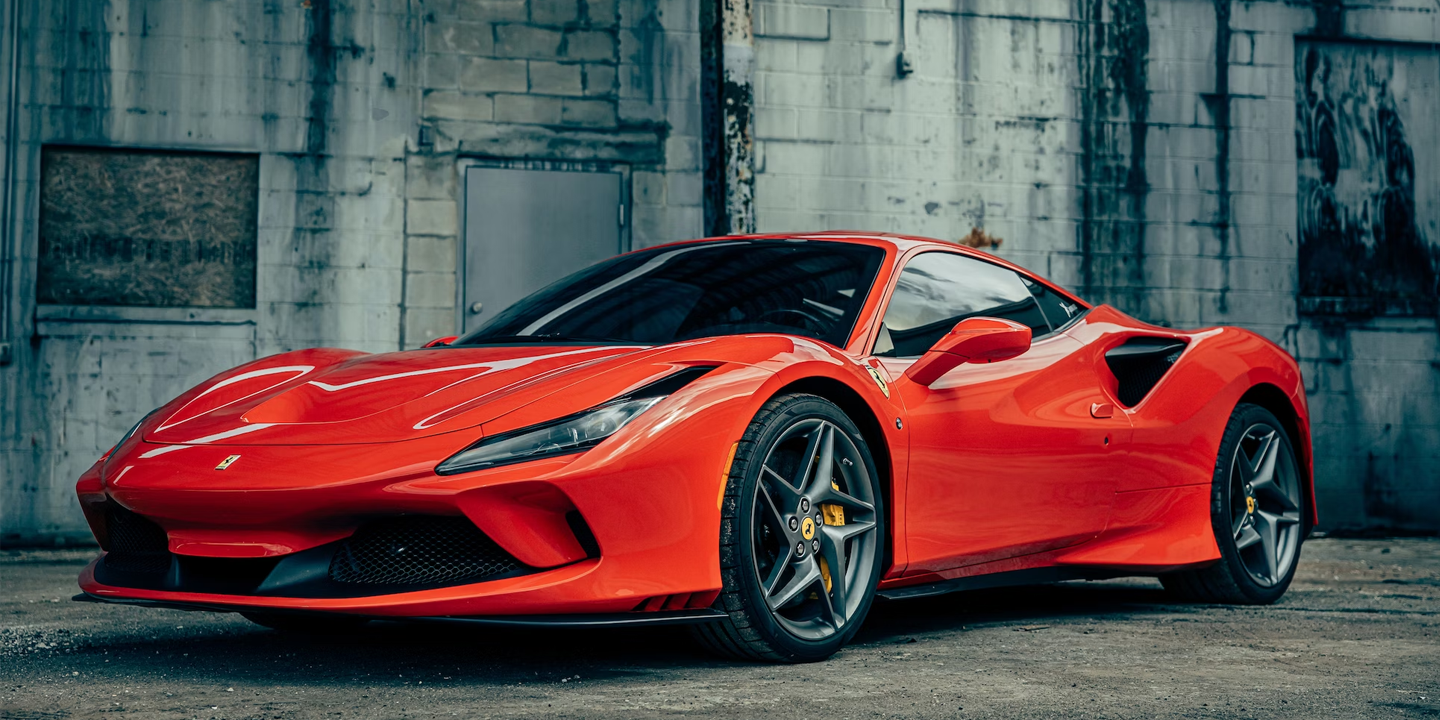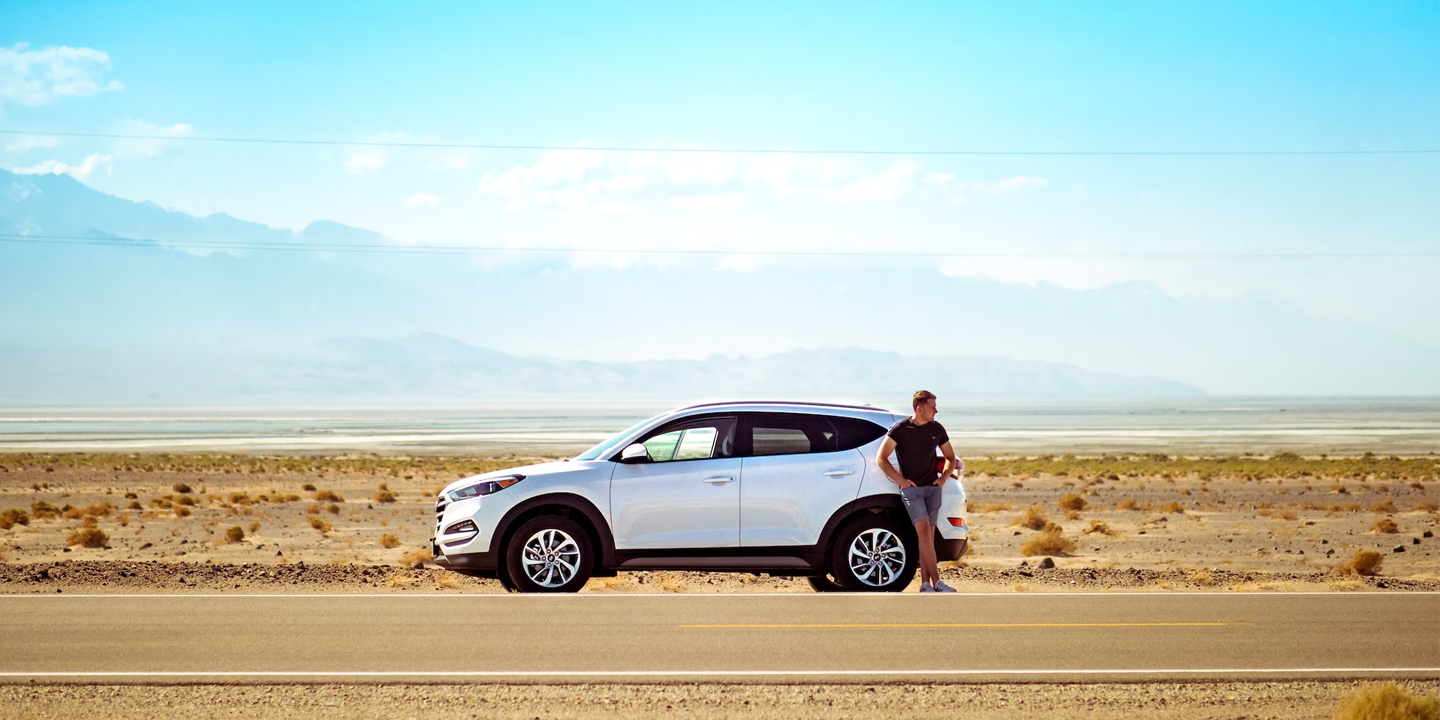A Legacy On Wheels
The Popemobile is something most people recognize instantly, but they likely don't know the fascinating story behind the world's most pious automobile. Over the years, it has changed again and again to match new safety needs, world events, and the personal style of each pope. Every version has its own purpose and history. So, join us as we discover the surprising details behind this unique vehicle’s long evolution.
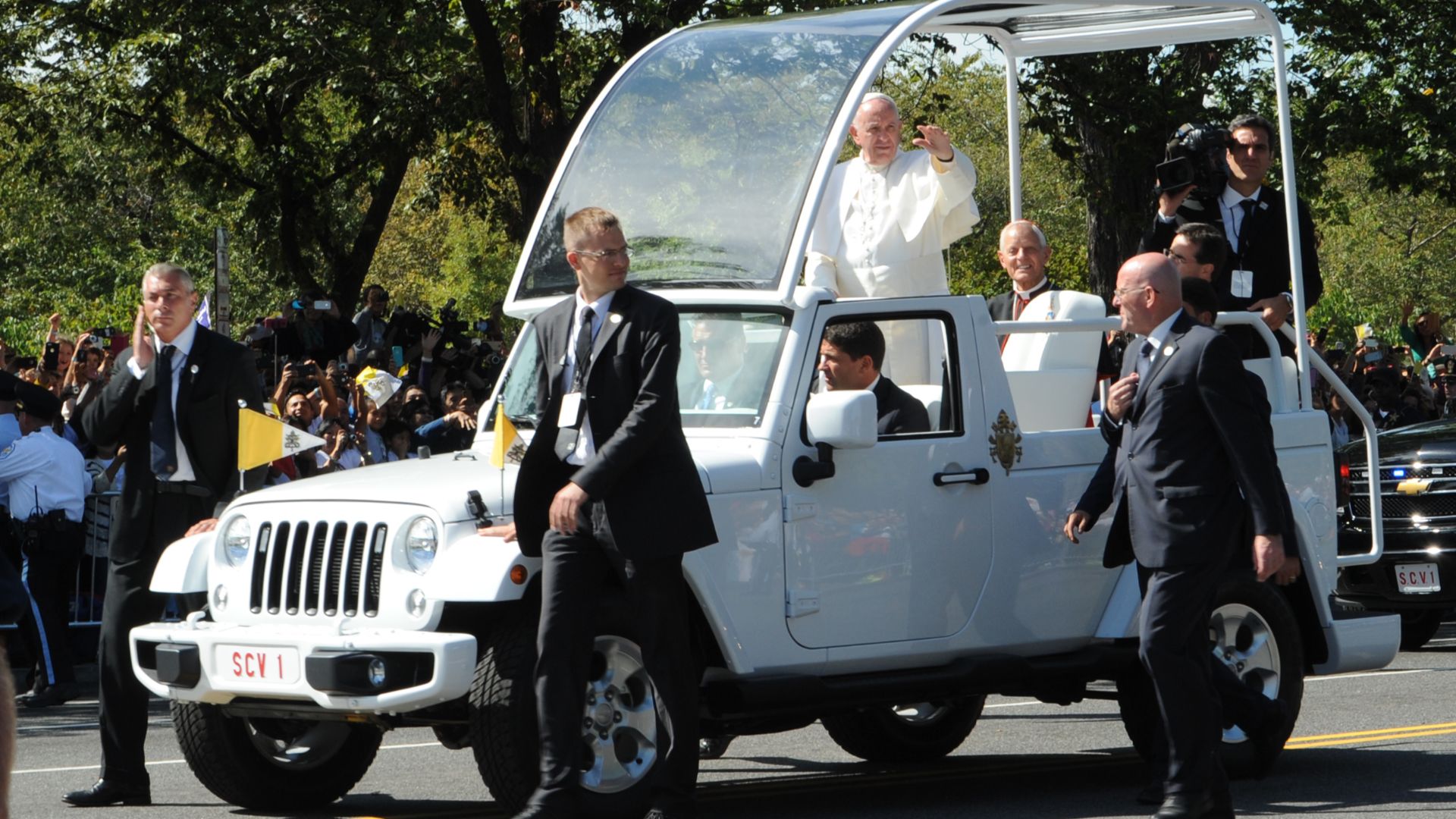 U.S. Department of the Interior on Wikimedia
U.S. Department of the Interior on Wikimedia
1. Evolved From Portable Sedia Gestatoria Throne
Before cars, Popes were carried on the sedia gestatoria, a portable throne decorated with feathered fans. The last to use it was Pope John Paul I in 1978. Many of these ornate carriages now reside in the Vatican Museums.
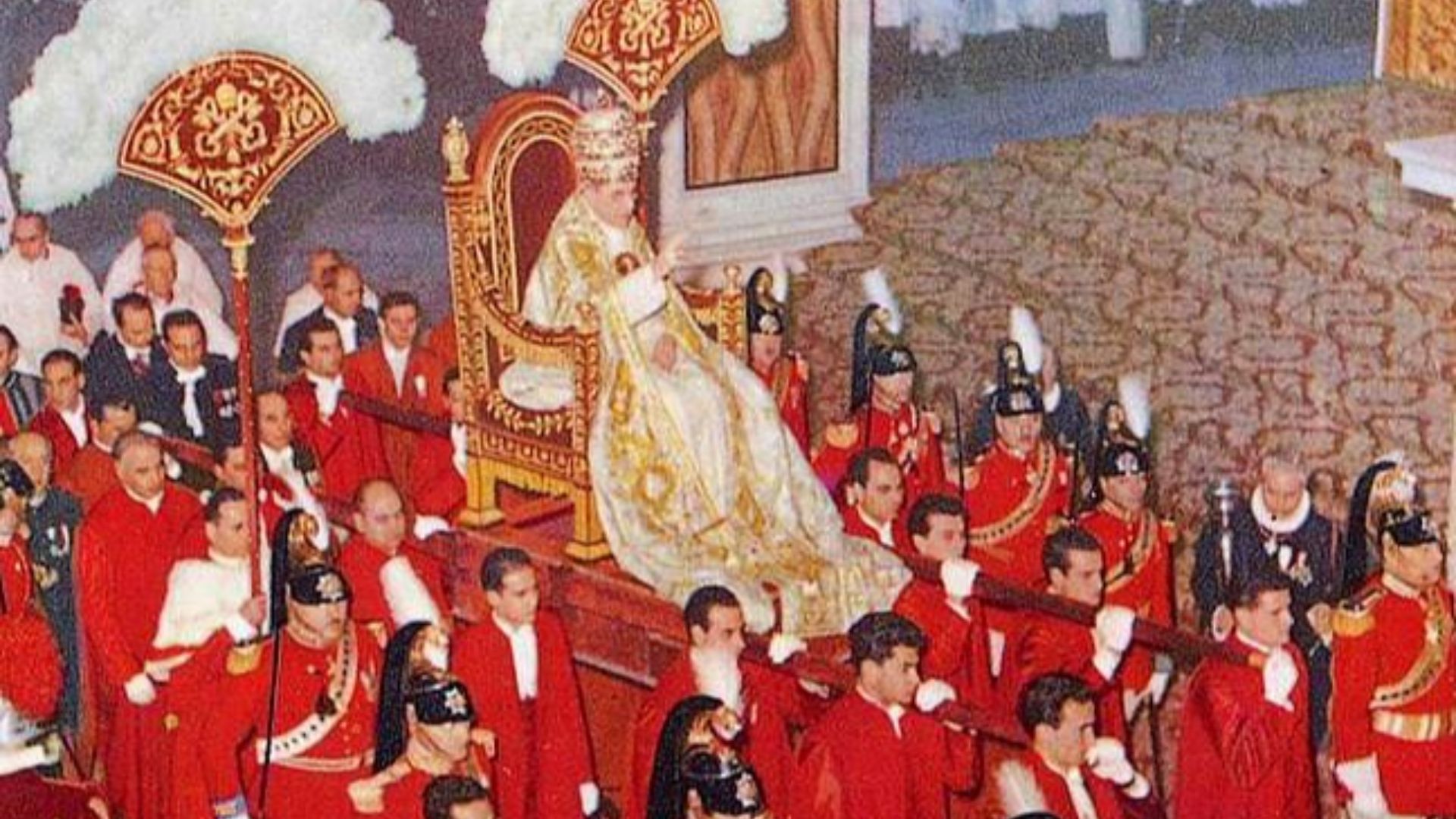 The original uploader was RiccardoP1983 at Italian Wikipedia. on Wikimedia
The original uploader was RiccardoP1983 at Italian Wikipedia. on Wikimedia
2. First Motorized Version In 1929
The first papal automobile, a Graham-Paige 837 limousine, was gifted in 1929 after the Lateran Pacts. Pope Pius XI used it for his first journey beyond Vatican walls in over 50 years—marking the dawn of papal motor travel.
3. Mercedes Nürburg Designed By Ferdinand Porsche
In 1930, Mercedes-Benz presented the Nürburg 460 Pullman as the first “official” Popemobile. Designed with input from Ferdinand Porsche, it established a longstanding Mercedes-Vatican relationship that continues today. It merged German engineering with papal ceremonial pageantry.
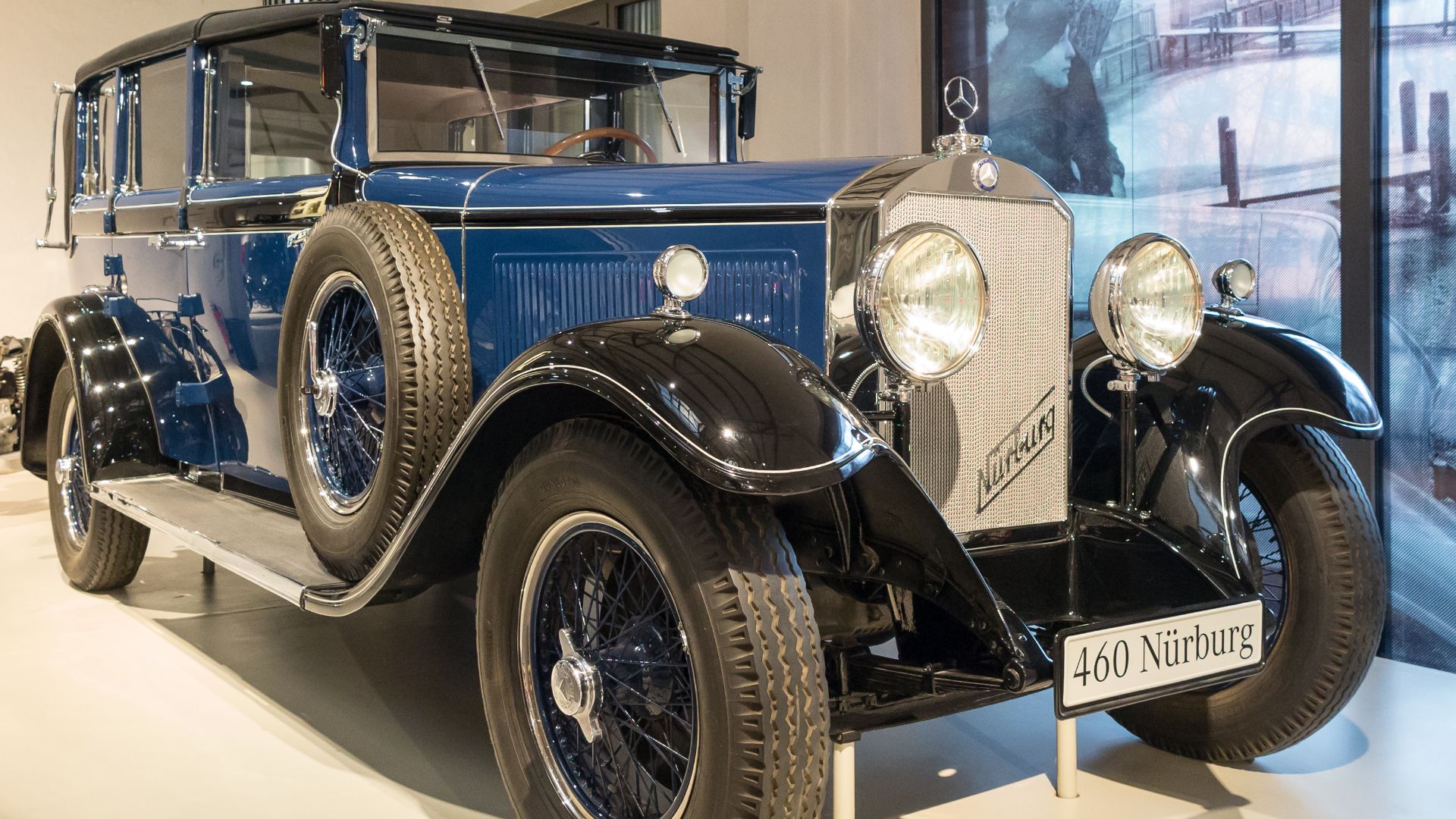 JoachimKohlerBremen on Wikimedia
JoachimKohlerBremen on Wikimedia
4. Term “Popemobile” Coined In 1965 Media
The term “Popemobile” first appeared in 1965 coverage of Pope Paul VI’s historic visit to New York City. During the trip, he rode in a specially modified Lincoln Continental with an elevated rear platform as an early precursor to today’s protective papal vehicles.
5. 1981 Attack Prompted Shift To Armored Popemobiles
During the 1981 shooting in St. Peter’s Square, Pope John Paul II was riding in a Fiat Campagnola. This event transformed the Popemobile design. After the attack, bullet-resistant glass and enclosed protection became standard features for papal vehicles.
 Livioandronico2013 on Wikimedia
Livioandronico2013 on Wikimedia
6. Benedict Requested The First Hybrid Popemobile Model
Known as the “Green Pope,” Benedict XVI was the first to request a hybrid Popemobile. He believed reducing emissions was a moral duty and pushed for eco-friendly transport long before the Vatican announced its sustainability goals.
7. Pope Francis Rejected “Sardine Can” Enclosed Designs
Pope Francis famously dismissed fully enclosed Popemobiles, calling them “sardine cans.” He preferred open models that would let him interact freely with people. His decision matched his humble style and love for simple cars like his Fiat.
8. Vatican Plans All-Electric Fleet By 2030
The Vatican plans to convert its entire fleet, including the Popemobile, to electric by 2030. In December 2024, it received its first Mercedes-Benz G-Class EV model and ushered in a new era of quiet, eco-friendly papal transport.
9. Heated Rotating Chair For Elevated Comfort
The Pope’s newest Popemobile, crafted by Mercedes‑Benz (based on the G 580 EQ), features a heated and rotating seat that can rise several inches for enhanced visibility. This clever upgrade allows him to face all sides of the crowd while staying comfortable.
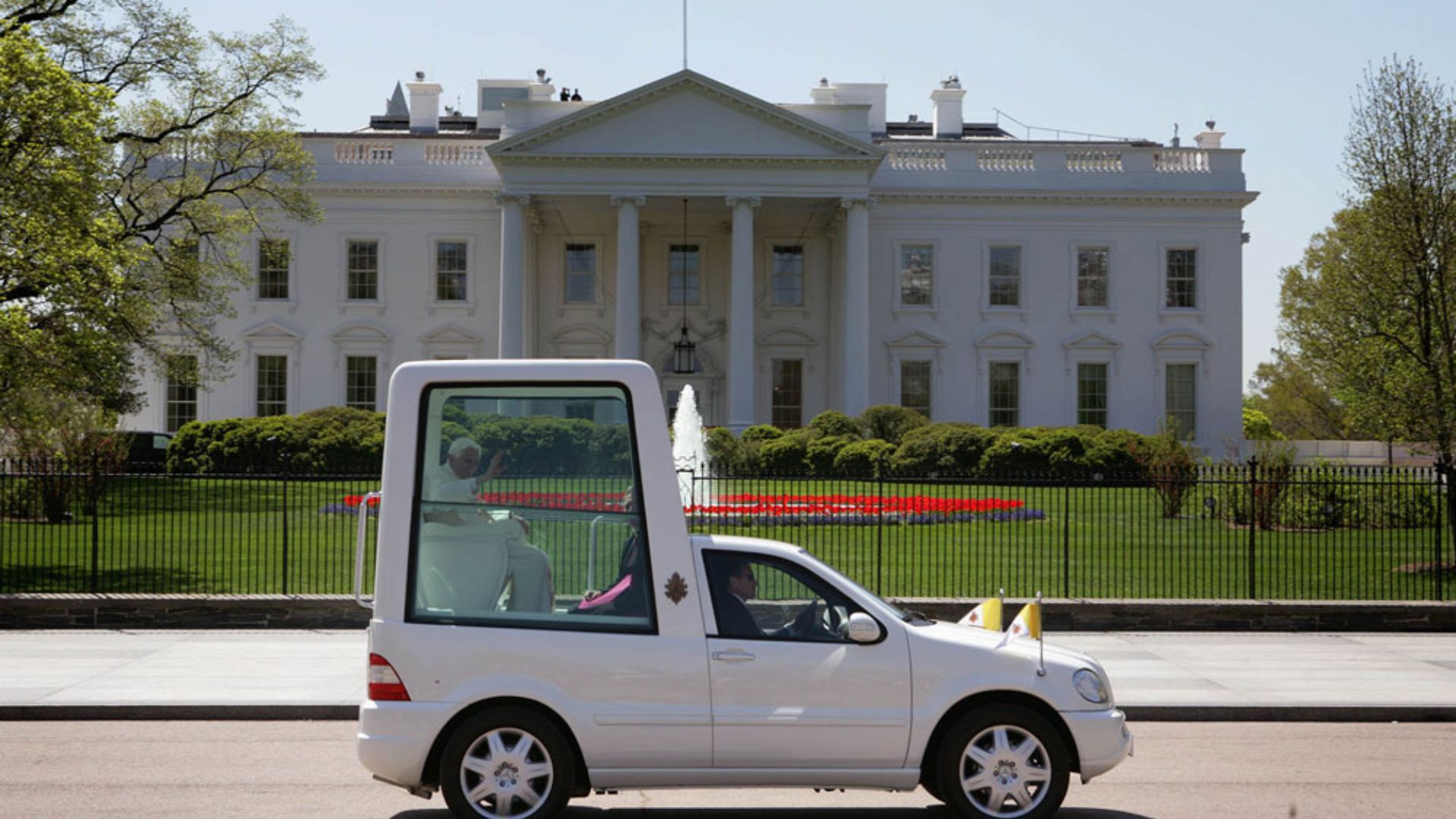 White House photo by Chris Greenberg on Wikimedia
White House photo by Chris Greenberg on Wikimedia
10. License Plate SCV-1 Reserved Exclusively
Every Popemobile carries the distinctive license plate “SCV 1,” meaning Status Civitatis Vaticanae or “Vatican City State.” The number is reserved solely for the Pope’s official vehicle, while all other Vatican cars use different SCV sequences that signify rank or purpose.
11. Handrails Enable Stable Waving At Crowds
These cars include sturdy handrails to help the Pope wave securely while standing during slow drives. These polished bars provide balance when the vehicle moves or stops unexpectedly and ensure stability and safety.
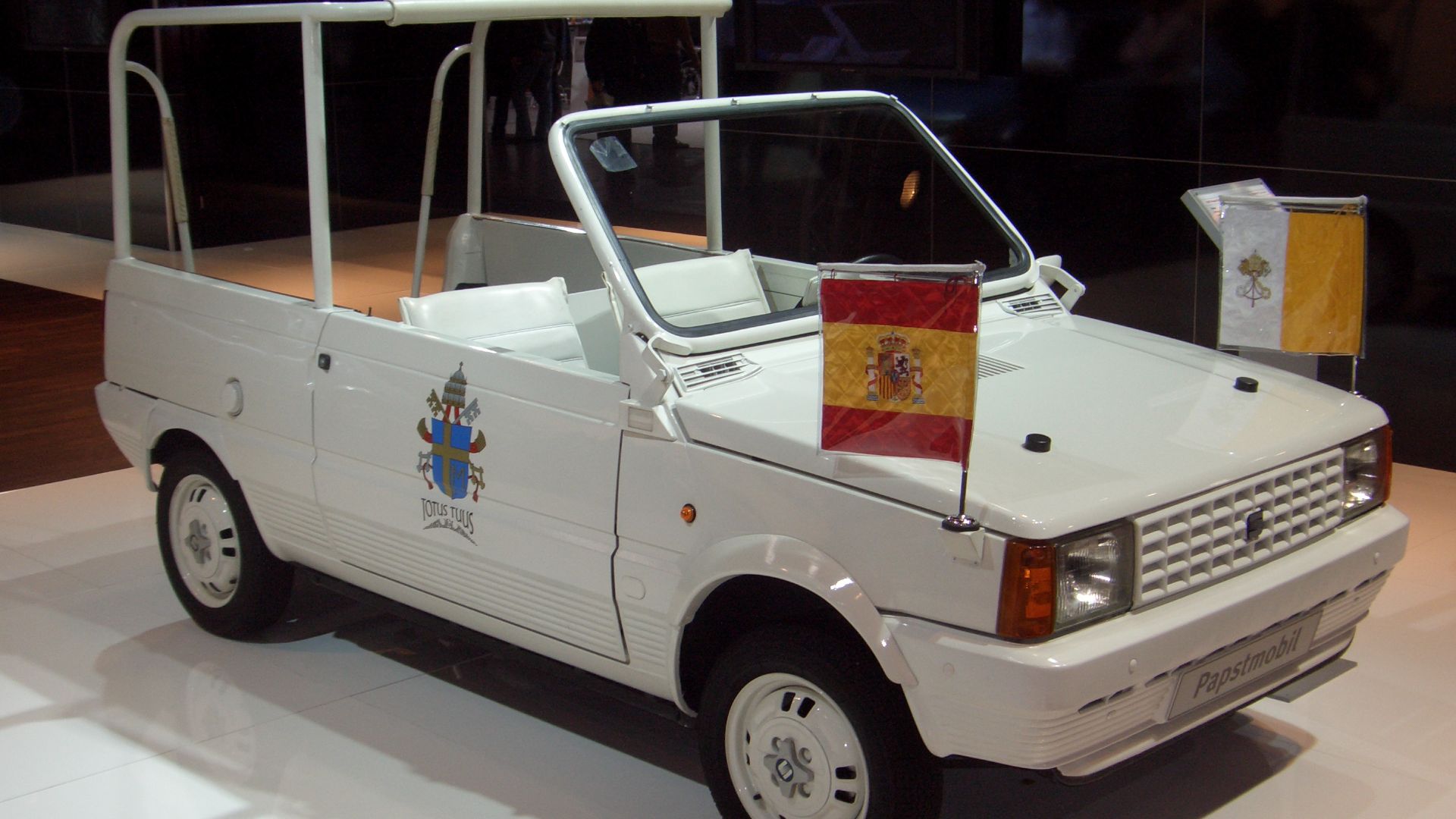 Detectandpreserve on Wikimedia
Detectandpreserve on Wikimedia
12. Retractable Steps For Easy Papal Entry
In certain Popemobiles, fold-away steps disappear into the chassis when not in use, simplifying the Pope’s arrival and departure. The customization behind each design elevates both functionality and the ceremonial nature of his public appearances.
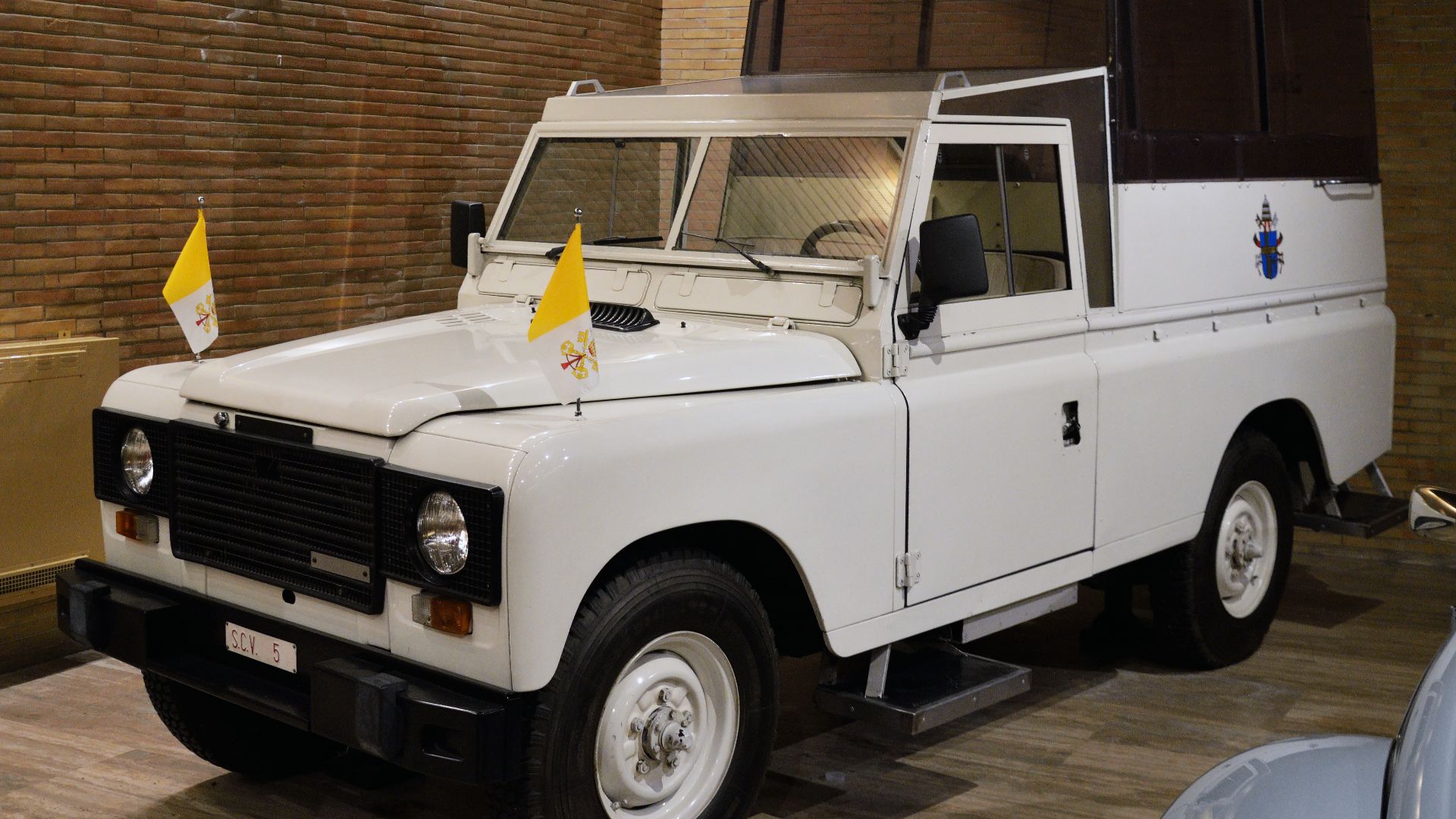 Livioandronico2013 on Wikimedia
Livioandronico2013 on Wikimedia
13. Folding Windscreen On Open-Air Variants
Earlier Popemobiles, such as the 1960s Mercedes-Benz 300D Landaulet, included folding windscreens or soft tops for greater flexibility. These removable panels allowed the Pope to enjoy open-air contact while still providing protection when conditions demanded.
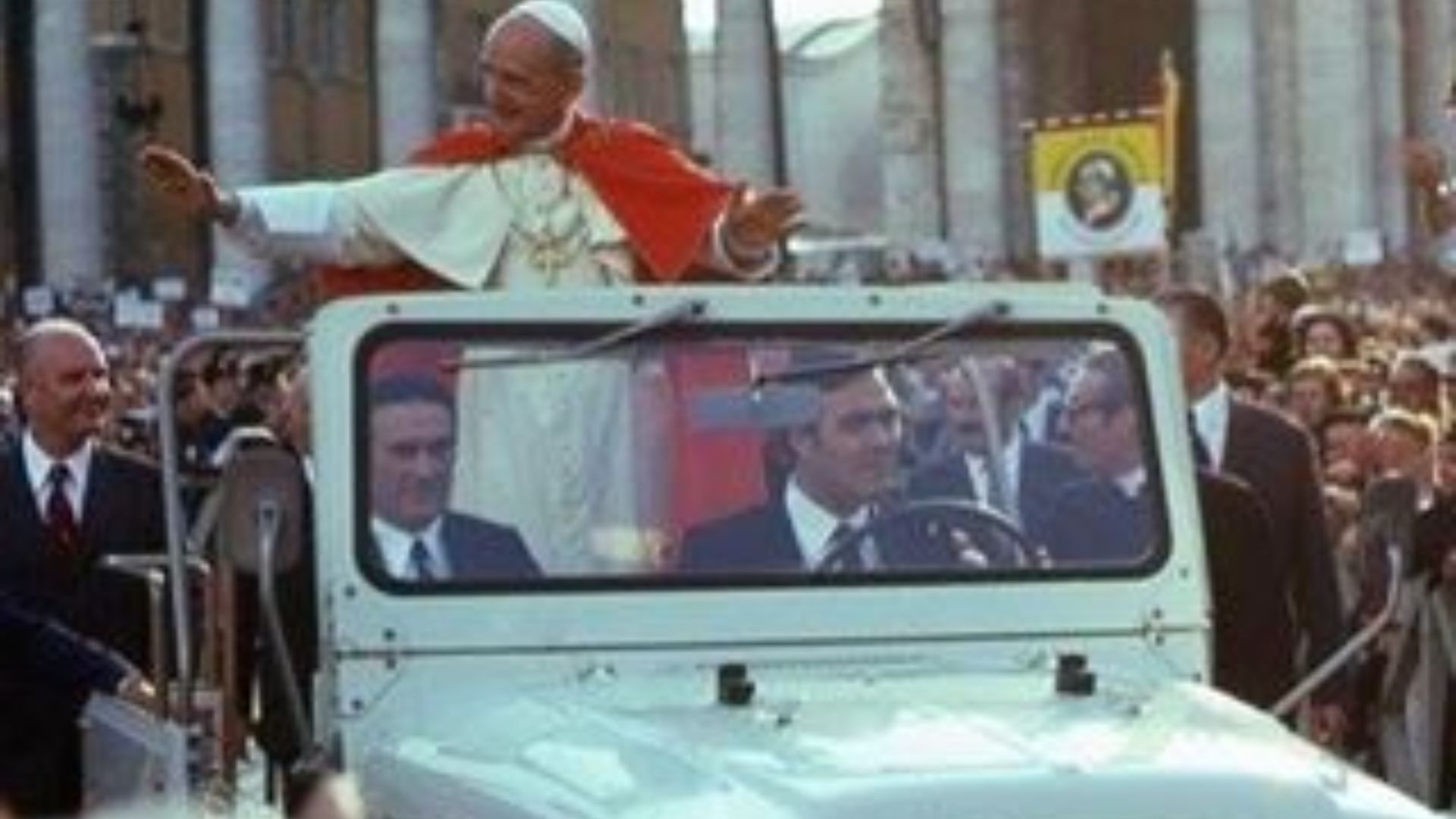 Moto "Club4AG" Miwa on Wikimedia
Moto "Club4AG" Miwa on Wikimedia
14. Custom Lighting Illuminates Interior At Night
Some Popemobiles are equipped with built-in LED panels that help Vatican security monitor the Pope’s surroundings during evening events. These lights illuminate the immediate area, which improves situational awareness without disrupting the ceremony.
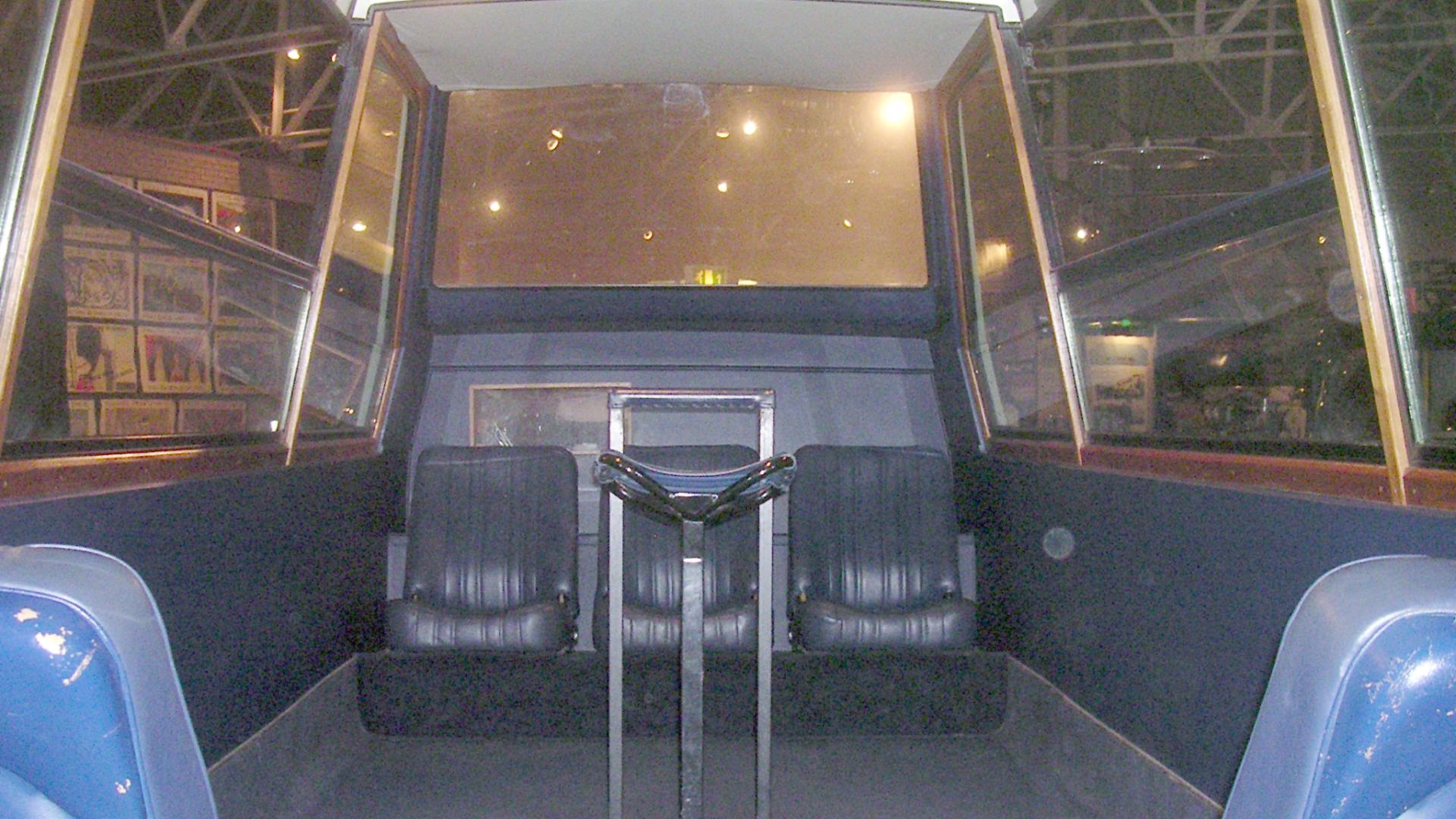 Terry Whalebone from Bolton, UK on Wikimedia
Terry Whalebone from Bolton, UK on Wikimedia
15. Manufactured As One-Of-A-Kind Unique Pieces
Each one is built as a singular masterpiece. Every design differs according to the Pope’s height, visibility needs, and event scale. Many older vehicles, like historic carriages before them, are preserved inside the Vatican Museums’ Carriage Pavilion.
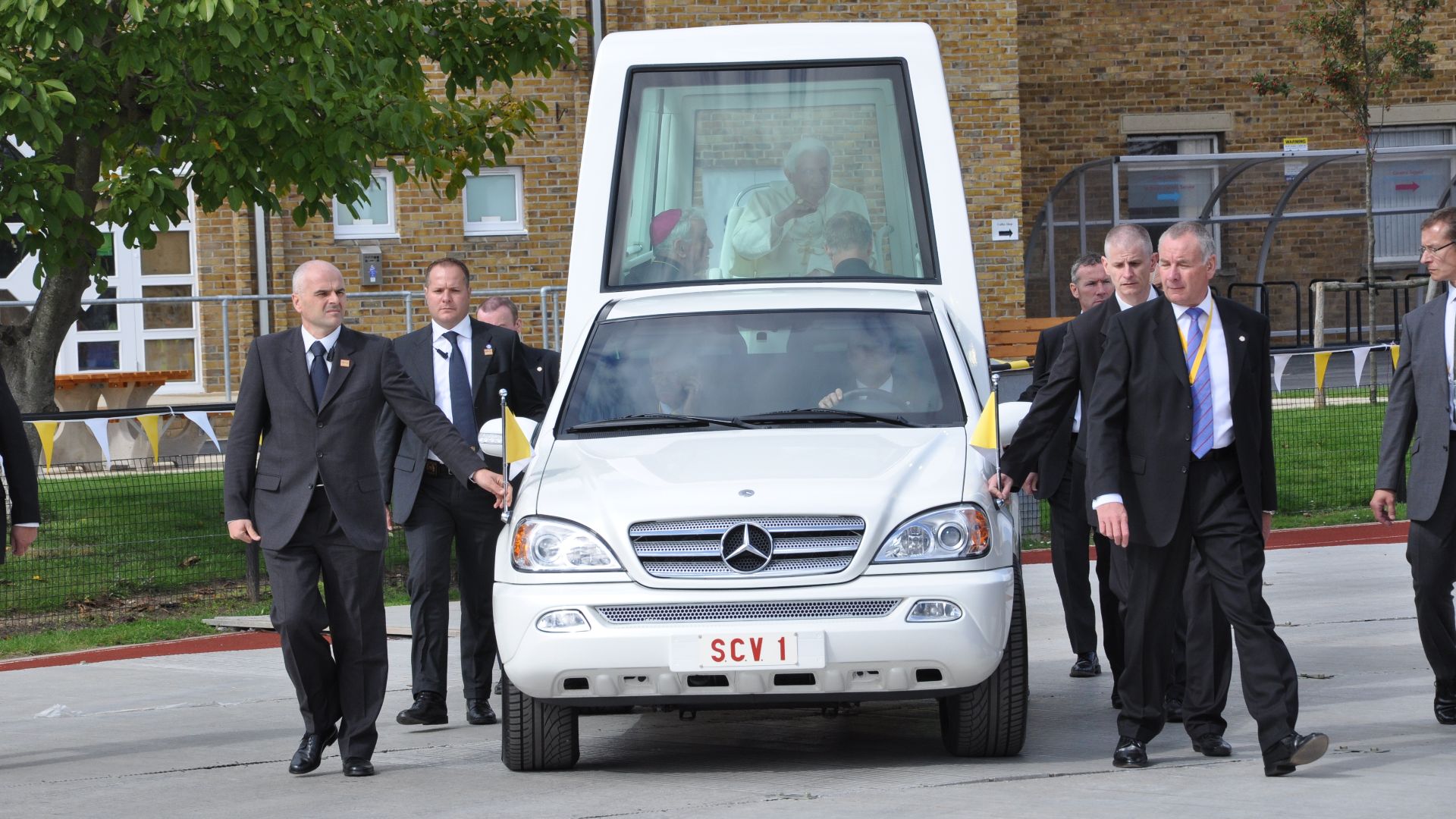 Diocese of Westminster from London on Wikimedia
Diocese of Westminster from London on Wikimedia
16. Donated By Automakers For Prestige Honors
Automotive giants such as Mercedes-Benz and Graham-Paige have gifted Popemobiles to the Vatican for decades. These donations celebrate milestones in papal history while allowing manufacturers to showcase superior craftsmanship before an audience of millions worldwide.
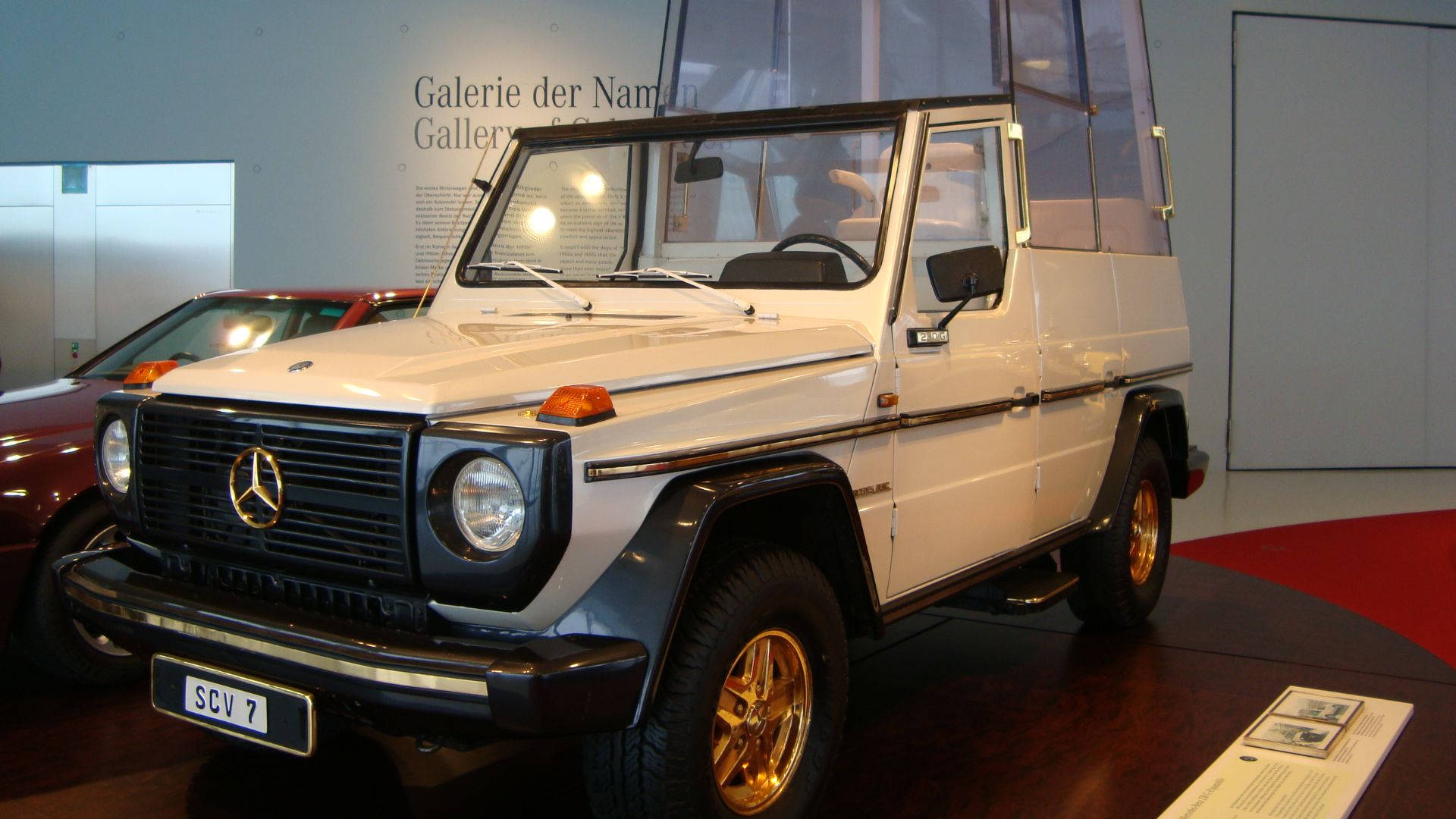 John Bell from UK on Wikimedia
John Bell from UK on Wikimedia
17. Displays Papal Crests On Ornate Doors
Look closely, and you’ll notice each Popemobile proudly wears the Pope’s coat of arms on its sides. Once a new leader is elected, skilled artists swap the crest to keep centuries of papal continuity alive through every detail.
18. Airborne Once Via Military Cargo Plane
For overseas trips, Popemobiles are carefully loaded onto military cargo planes and flown to their destinations. This complex operation highlights their symbolic significance and the Vatican’s commitment to security, precision, and global visibility during papal visits.
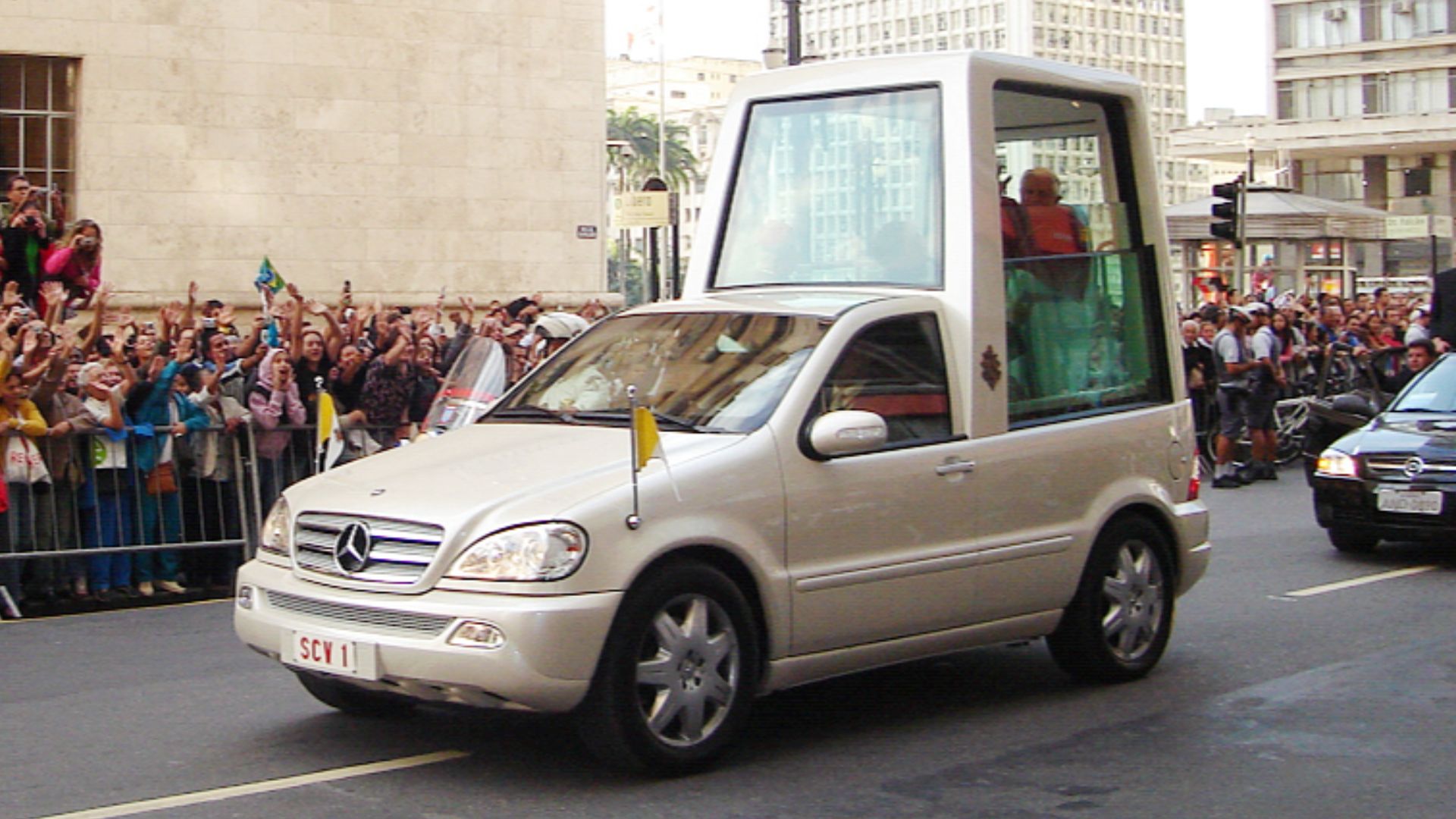 Original uploader was Caiodovalle at de.wikipedia (Original text: Caio do Valle) on Wikimedia
Original uploader was Caiodovalle at de.wikipedia (Original text: Caio do Valle) on Wikimedia
19. White Leather Throne On Frame
The Popemobile’s signature white leather throne sits atop a raised platform for visibility. Adjustable and cushioned, it brings together luxury with practicality and ensures the Pope remains visible and comfortable throughout long journeys or public appearances.
20. Highly Trained Security Driver Pool
The men behind the wheel of the Popemobile are not just any chauffeurs. They belong to the Vatican Gendarmerie Corps and undergo intense specialized training. Driving an oversized, top-heavy vehicle—often at a crawl through surging crowds—requires exceptional precision, awareness, and immediate reaction skills for security protocols.



